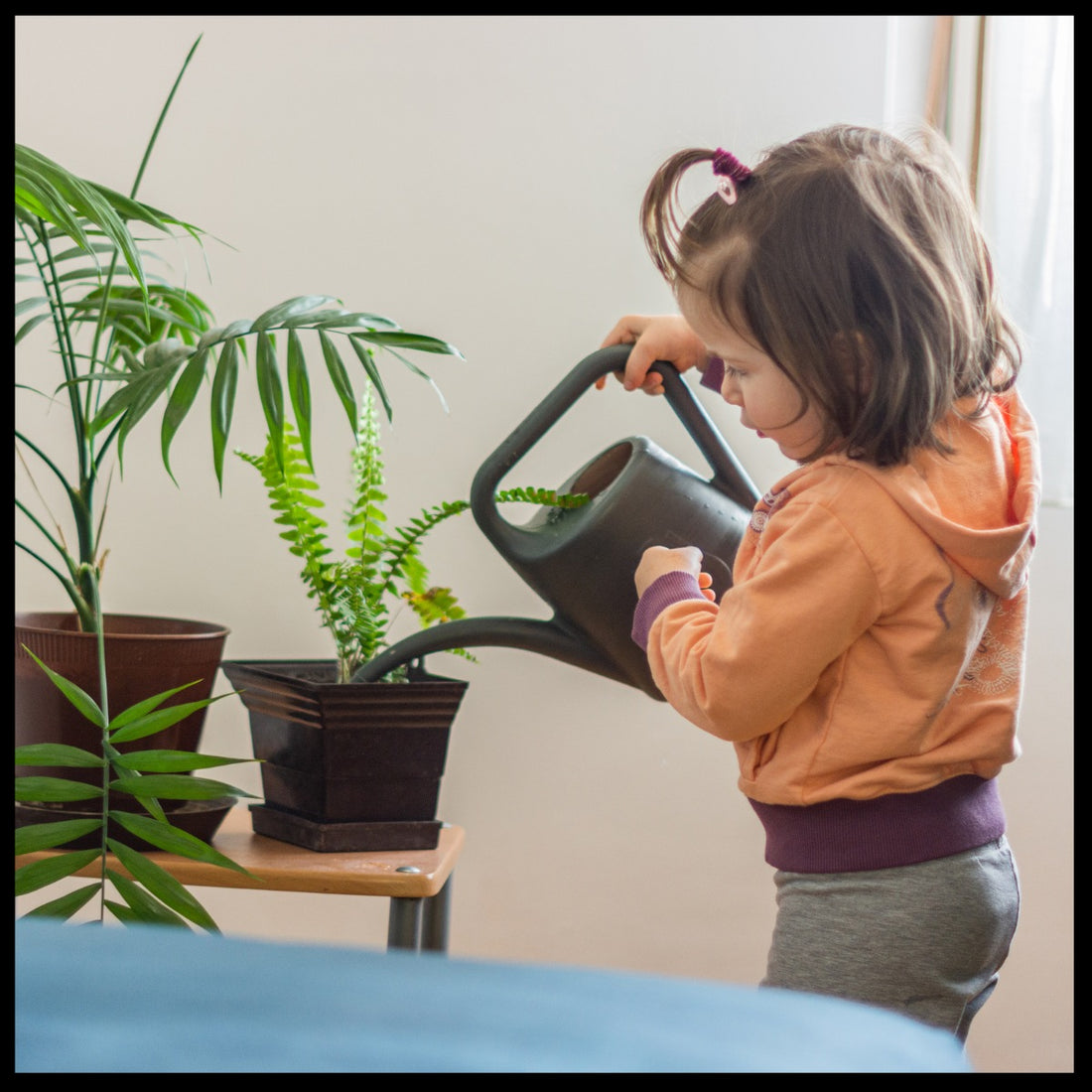When winter lingers and the kids get restless, it is a great time to explore indoor gardening projects with your children or grandchildren. Who knows, these activities might spark a lifelong passion for gardening! Plus, they teach children about plant science while keeping them occupied and entertained.
5 Winter Garden Activities For Kids
Grow Sprouts
There are two ways to observe seeds sprouting and growing. You can use a single seed variety in a clear jar or create a mini greenhouse with multiple seed types.
The jar method:
- Get a glass container and lining its interior with a moistened paper towel.
- Carefully place several seeds - zucchini or bush beans work wonderfully - between the glass wall and the damp towel.
- Secure the lid and position the jar in a visible spot on your kitchen counter.
- Make it a daily ritual to check the paper's moisture level, adding water when needed.
- Within just a few days, you'll witness the magic when your seeds begin to sprout.
The mini greenhouse using everyday household items:
- Start with a recycled aluminum foil pan and a plastic bag.
- Place a thoroughly dampened paper towel along the bottom of your pan.
- Carefully arrange various seeds like zucchini, scarlet runner beans, cucumbers, and broccoli on top.
- Create a simple seed map to track which varieties are planted where - this makes it exciting to identify the first seeds to emerge.
- Encourage children to make predictions about which seeds might sprout first. This fosters their scientific thinking skills.
- Cover the entire setup with a plastic bag to create greenhouse conditions.
As the seeds germinate and develop roots, you have a perfect opportunity to discuss the germination process and how different plant species have varying germination timeframes.
Care for Houseplants
Nurturing plants offers children of all ages valuable lessons in responsibility while experiencing the joy of helping something grow. Young preschoolers can participate by misting leaves with spray bottles and wiping dust from leaves with sponges. More experienced children can assist with tasks like pruning dead foliage and transplanting.
Demonstrate how to propagate spider plants by potting their offspring (spiderettes) that develop on runners. Select resilient houseplants such as pothos (Epipremnum aureum), which thrive with minimal light and grow rapidly. Take a trip to a garden center or home improvement store and let children choose their own plants. For safety, avoid plants with thorns, spines, or toxic properties when working with young ones.
Grow a Venus Flytrap
Insect-eating plants never fail to captivate children's imaginations. The Venus flytrap (Dionaea muscipula), a bog plant native to the Carolinas, stands out as one of nature's most intriguing carnivorous specimens. Its specially adapted leaves form an ingenious trap explicitly designed to capture soft-bodied insects. Once prey is caught, the plant takes approximately a week to digest its meal before the trap reopens, ready for its next capture.
Venus flytraps are often available at local garden centers. These unique plants thrive in specific conditions that mirror their natural habitat. They require a sunny location with cool temperatures and high humidity levels. A terrarium is the ideal growing environment.
Proper watering is crucial for success with Venus flytraps. Always use distilled water, as minerals in tap water can harm these sensitive plants. These plants don't require fertilizer - their insect-catching abilities provide all the nutrients they need.
If you choose to feed your Venus flytrap, you can release small, living flies within the terrarium. The insects must be alive to trigger the trapping mechanism, but don't worry if you can't provide regular meals. These resilient plants can survive extended periods without catching prey. However, there are several things these plants won't tolerate: drought conditions, fertilizer applications, and low humidity levels.
It's essential to teach children to resist the temptation to trigger the traps unnecessarily. While watching the leaves snap shut is fascinating, excessive triggering can weaken the plant. Each trap can only close and reopen a limited number of times before it stops functioning, so it's best to let the plant operate naturally.
Paint Plant Pots and Garden Rocks
There are several gardening crafts that children enjoy during the winter months. Painting things is always a great choice and lets the child be creative while also creating lasting garden elements. Terracotta pots are excellent for painting. You can even plan which plant will go in it and paint it accordingly — for example, a tomato pot painted with tomatoes.
A favorite project is painting garden rocks to be used as plant markers. You will need rocks, acrylic paints in various colors, and clear varnish. The varnish will protect the rock from the elements. Place the beautiful rock markers in the garden in springtime, or your child may wrap them and give them as gifts to family and friends.
Grow a Garbage Garden
Transform kitchen scraps into an exciting indoor garden. Put root vegetable tops - like beets, carrots, or turnips - on water-covered pebbles in a pie plate. Soon, roots and leaves will emerge. Grow an avocado plant by extracting the pit from a ripe fruit and planting it in a six-inch pot filled with potting mix. This creative approach teaches children about reducing waste and finding value in items typically discarded.
Other great winter gardening activities for children
- Create a DIY bird feeder using halved bagels. Cover them in cooking fat and birdseed and hang outdoors.
- Start a windowsill herb garden.
- Construct a terrarium.
- Explore seed catalogs while planning next season's garden.



